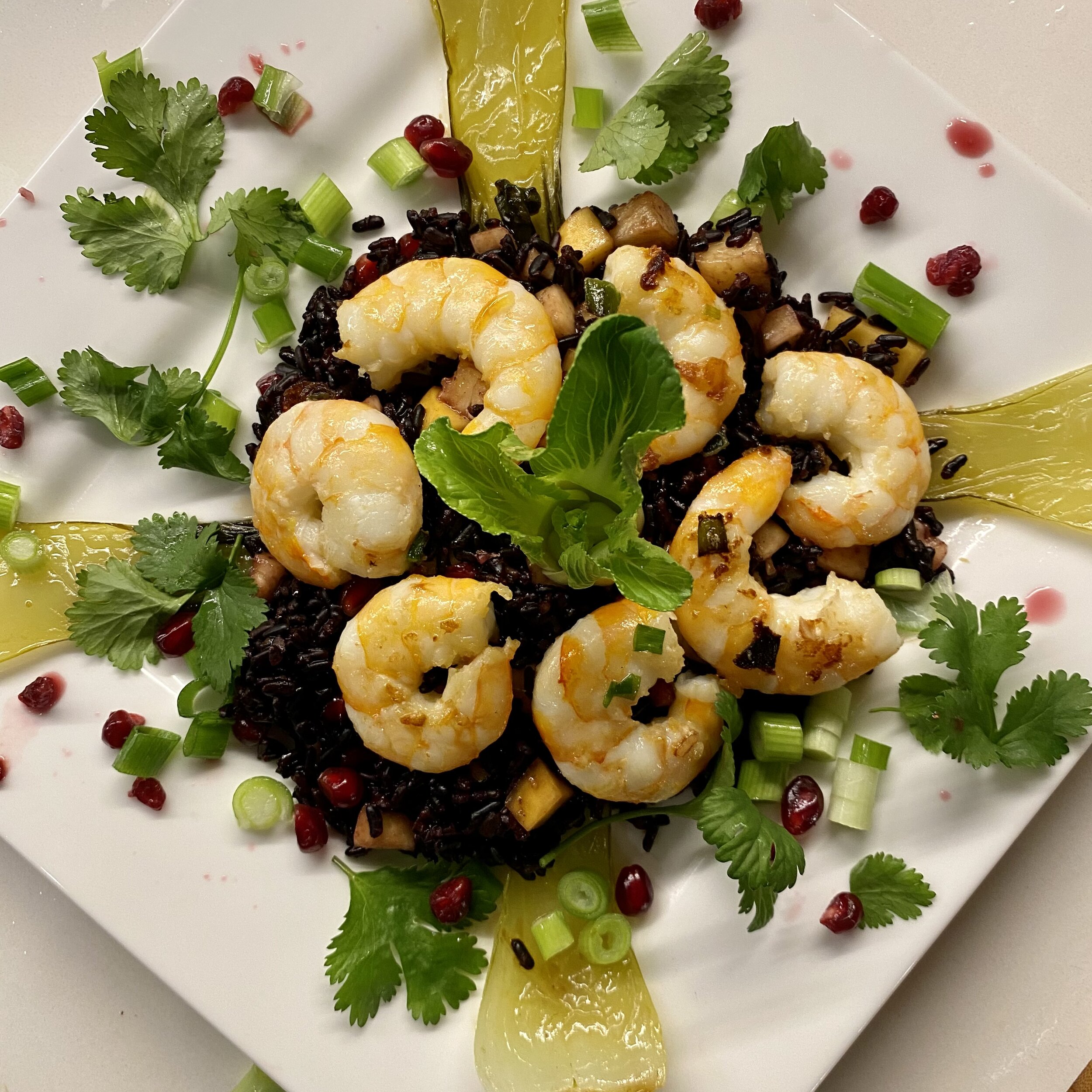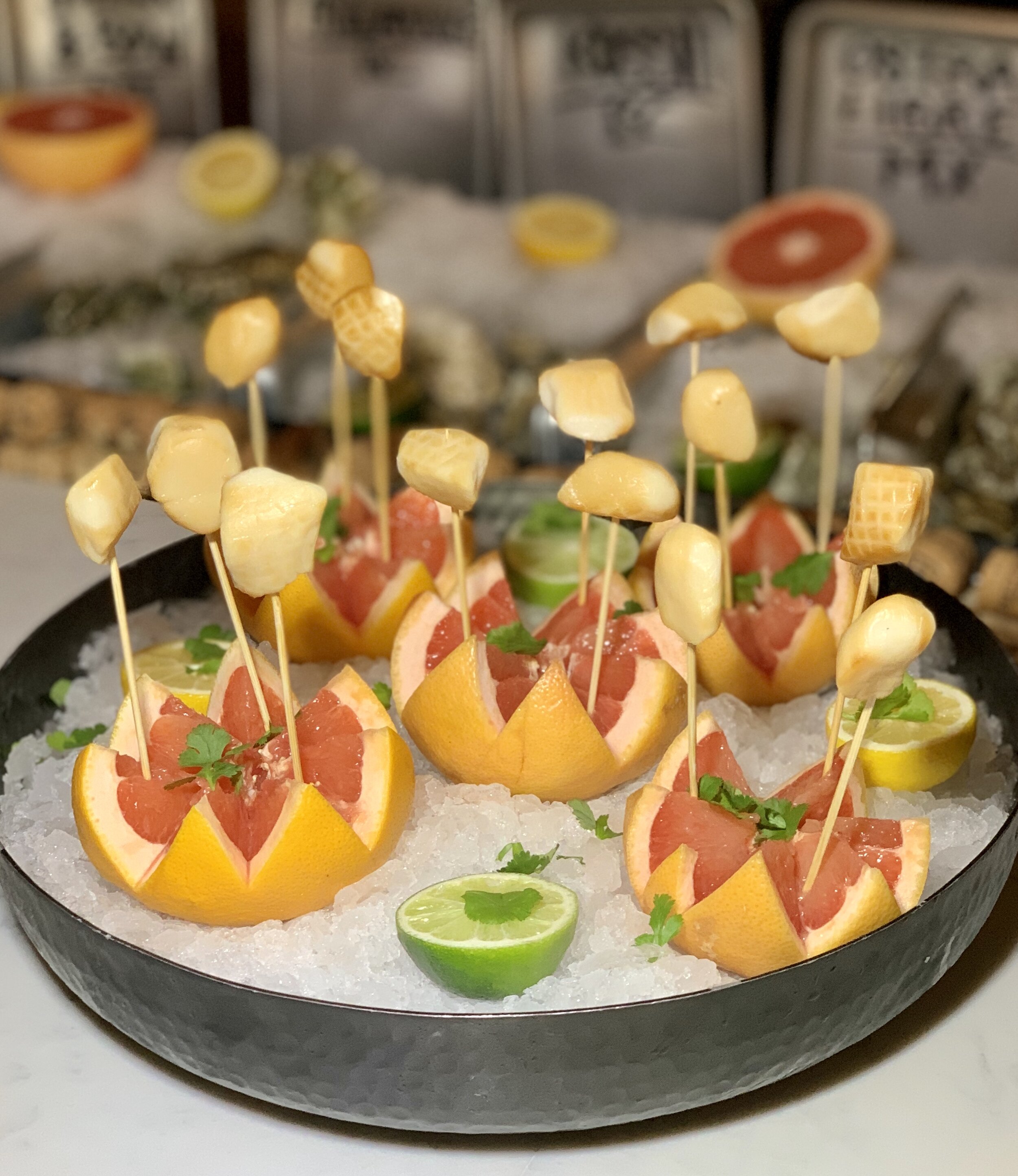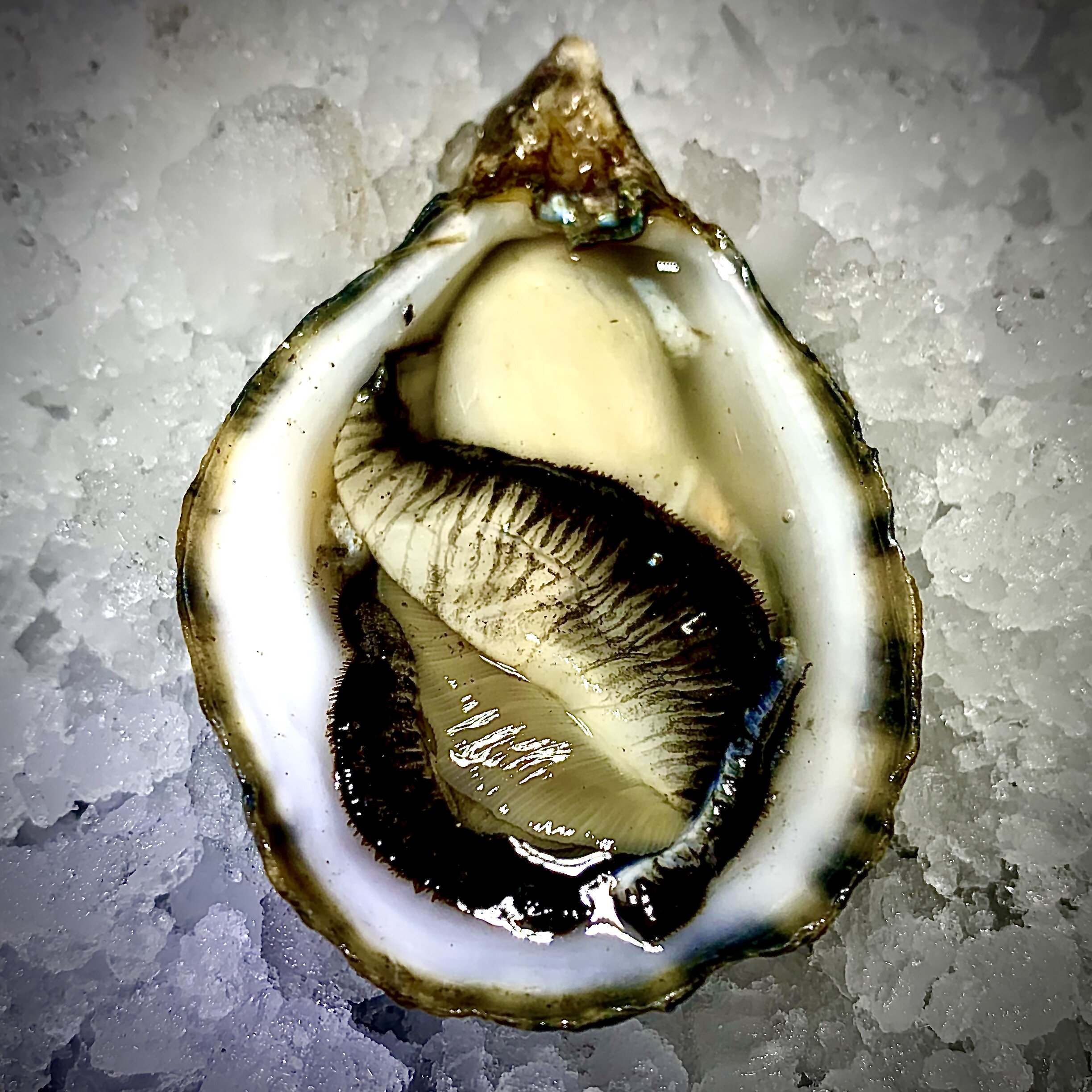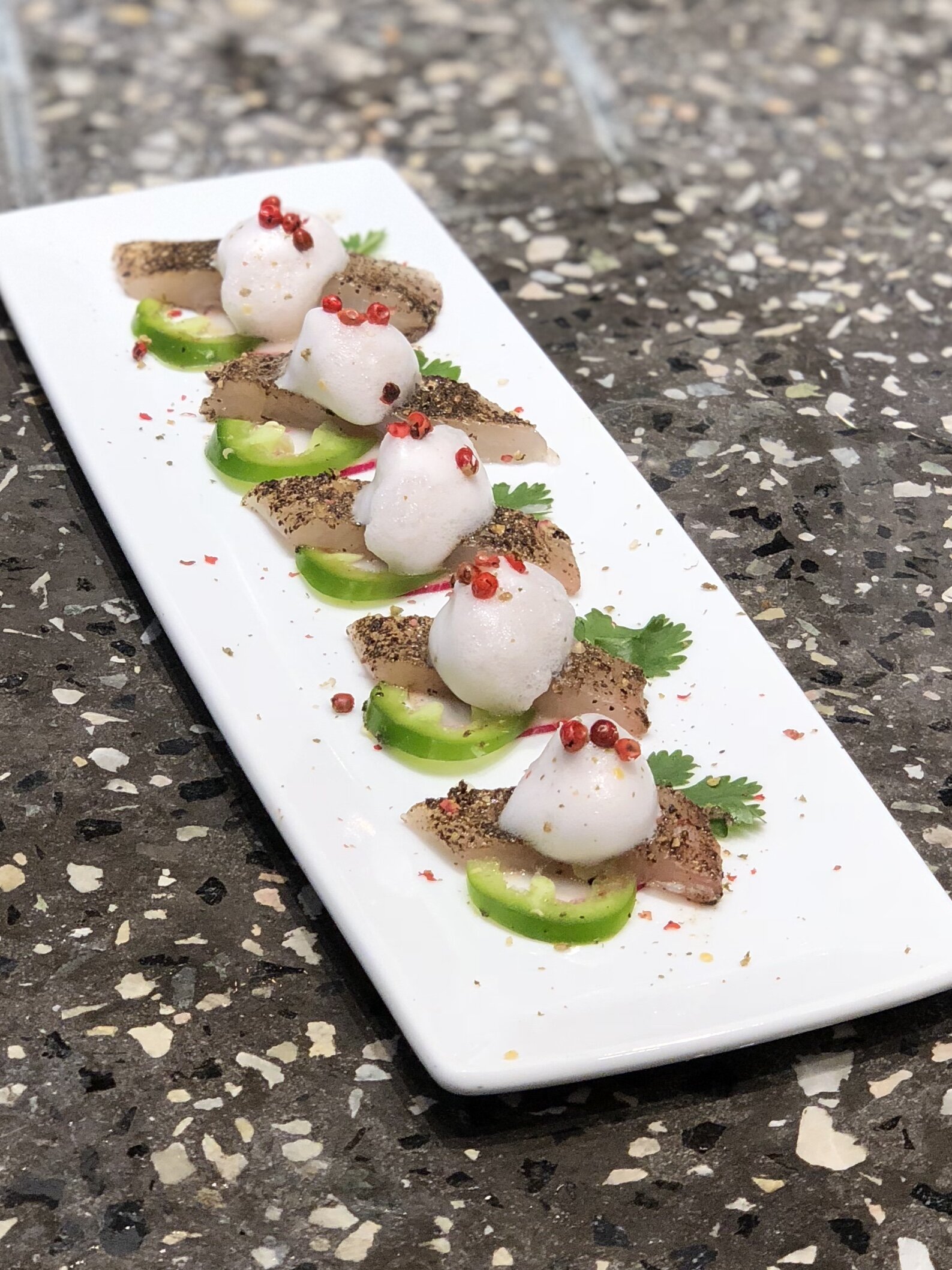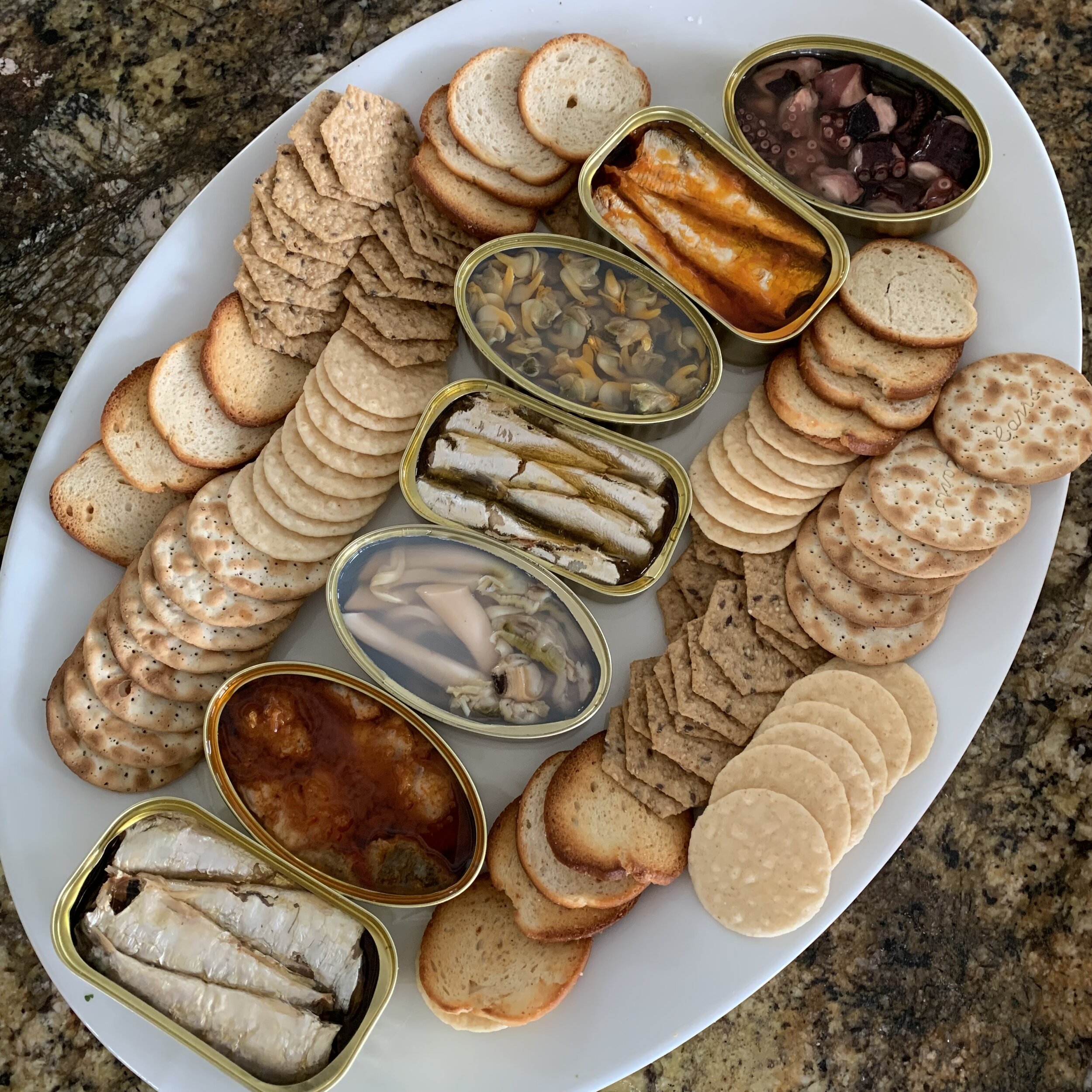MARINE CUISINE™ IS SEAFOOD v.3.0
Marine Cuisine™ IS DEFINED AS “SMART SEAFOOD CHOICES” BY 4 METRICS:
1. Safe 2. Healthy 3. Responsible 4. Sustainable
CERTAIN SPECIES, FISHERIES & PRACTICES ARE EASILY IDENTIFIABLE AS “BEST OR VANGUARD” IN THE 4 METRICS ABOVE. WE FOCUS ON SOURCING, PREPARING AND PRESENTING DISHES WITH THESE METRICS AS BASELINE STANDARDS. WE DO SO IN THE MOST COLORFUL, NUTRITIOUS AND DELICIOUS WAYS POSSIBLE. We make ugly fishes, delicious.
Marine Cuisine™ is a culinary ethic and style which informs a collection of dishes which features smaller and lesser known species in order to provide better choices for chefs and consumers. When this is done well, it can create opportunities to reduce costs and make serving and eating fish more affordable and healthier.
CAVIAR BUMPS with Champagne is a great way to start.
MARINE CUISINE™ features bivalves, crustaceans, gastropods, echinoderms and small fin fish, NEVER LARGE FISH like tuna, swordfish and halibut…for two reasons.
Many of these fisheries are not sustainable or responsibly harvested, in spite of “green-washing” certifications which are misleading or entirely false.
Smaller fish and other marine creatures are healthier as larger fish simply contain more and more toxins. The digestion of micro-plastics by fish, has been proven to create extremely carcinogenic toxins which deposit in the cells and tissues of fish.
The term MARINE CUISINE™ was coined and first used in commerce by Master Mermmelier Kevin Joseph in 2014 when it was used to describe dishes served in support of oysters at certain New York Oyster Week events. It is now being used to describe part of the culinary concept for an upcoming cookbook, a collection of Raw Bars, a restaurant group and Kevin’s RAW BARge concept. In 2019 a Federal Trademark # 6018189 was awarded to Kevin Joseph by the USTPO.
MARINE CUISINE™ are Affordable & Common creatures & Products
SMALL FISH: Eel, Smelt, Sardine, Anchovy, Herring…etc
CRUSTACEANS: Shrimp, Prawns, Crab, Lobster…etc
MOLLUSKS: Oysters, Clams, Mussels, Scallops, Squid, Octopus
GASTROPODS: Snails, Conchs, Whelks
ECHINODERMS: Sea Cucumber, Sea Urchin (Uni)
SEA VEG: Seaweeds
ULTRA-PREMIUM OYSTER SERVICE with Accoutrement Premier™
DelicaSEAS™ are Rare & Exotic Creatures & Products
Caviar & Roe / Bottarga
Barnacles
Ultra-Premium Oysters
Abalone
Uni
Rare Seaweeds
Sea Salts
Much of the species we will feature and promote are those identified as good or best choices by Monterey Bay Aquarium® Seafood Watch®.
VIEW MARINE CUISINE™ MENU
CRABOCADO - Peeky Toe Crab& Avocado Salad with Sweet Corn, Cilantro & Radish served on Belgian Endive Leaves and topped with Red Hawaiian Sea Salt.
Marine Cuisine™ is SAFE
Safe means you won’t be sick from anything immediately. Proper management of product, sourcing and preparation is the cornerstone of any safe food, including MARINE CUISINE
Marine Cuisine™ is HEALTHY
This means that when enjoyed regularly, health benefits will result. The species we use are healthier than traditional American seafood for two main reasons:
Less heavy metals.
Less or none of the by products of micro-plastic degradation.
Each are explored in detail below.
Marine Cuisine™ is SUSTAINABLE
Great progress in sourcing and serving sustainable species has been made by many chefs, world wide. So, this is nothing new. Marine Cuisine simply applies the highest standards for sustainability to our dishes and describes our style and values.
Marine Cuisine™ is RESPONSIBLE
Responsible and sustainable are somewhat synonymous terms with regards to wild seafood. But in the case of aquaculture which is the source of more and more of our fish, there are bad practices, good practices, best practices and NEXT GEN practices. Marine Cuisine focuses on fish produced through best and next gen practices.
MARINE CUISINE™ MENU
Uni is one of our favorite DelicaSEAS. So great for you, sustainable, responsibly harvested. Ans we love to present it creatively.
“MAKING UGLY FISHES DELICIOUS”
A few more photos of dishes we typically serve together can be seen below. NOTE: Not all include fish and some can be made GF or Vegan.
LOBSTER CAESAR SALAD Lobster. Romaine. Sourdough Crutons. Freshly made, 100% authentic Caesar Dressing
WATERMELON, FETA & MINT SALAD
HEIRLOOM TOMATO CAPRESE SALAD - Heirloom Tomatoes, Basil, Mozzarella over olive oil and topped with balsamic glaze and cracked black pepper
HEIRLOOM TOMATO & CRAB GAZPACHO - Organic Heirloom Tomatoes, & Blue Crab Meat, English Cucumbers with bell peppers, sherry vinegar and garlic served in a teacup with a lemon & cumin dusted rim. *Vegan if served without crab, shrimp or other shellfish.
ARCTIC CHARTARE: Arctic Char, cubed and tossed with salt, pepper, soy sauce and olive oil, served over avocado and black truffle & mushroom pesto with beet & sweet potato chips
CEVICHE - Small tropical fin fish (usually snapper) diced and cured in lime juice, Mixed with grapefruit sections, red onion, cilantro and red bell pepper. Topped with paprika toasted pine nuts and black Hawaiian sea salt
CRUDO - Colder water fish (usually fluke) cured in Kosher Salt. Served over lemon oil and topped with chive and a citrus, rose foam and pink peppercorns.
SHARK-UTERIE - A collection of tinned fish and shellfish, fine crackers, pickled and fermented vegetables, cured meats, smoked fish and fine cheeses.
JUMBO SHRIMP COCKTAIL - NEVER any Toxic Asian product. ALWAYS Jumbo Mexican, Ecuadorian or, ideally, when available, AMERICAN product.
SMOKED WILLAPA BAY SCALLOPS
WHOLE LIVE PECONIC BAY SCALLOPS, ON THE HALF SHELL
CRAB IN A BLANKET - Jumbo Lump Blue Crab Claw Meat & Grilled Asparagus, wrapped in basil and prosciutto and topped with cracked black pepper and balsamic glaze
LOBSTER ROLL
STRIPED BASS, broiled with a leek butter reduction over wild rice with edimame & green apple
Whole Grilled Fish: Black Sea Bass with 6 Herbs & Garlic // Red Snapper with Jerk Seasoning // Bronzino with Calabrian Chilli Puree
BLACK SEA BASS Broiled and served over black rice, navy beans & nectarines. Topped with a leek butter reduction and chives
SURF & TURF - Filet Mignon with Broiled Lobster Tail. Served over Tumeric Risotto and with Green Beans tossed in butter, black sesame seeds and roasted pine nuts.
MAKE SMART CHOICES
BEST CHOICES IN SEAFOOD
Abalone (farmed)
Arctic Char (farmed)
Barramundi (US & Vietnam farmed)
Bass (US hooks and lines, farmed)
Catfish (US)
Clams, Cockles, Mussels
Cod: Pacific (AK)
Crab: King, Snow & Tanner (AK) Lionfish (US)
Oysters (farmed & Canada)
Prawn (Canada & US)
Rockfish (AK, CA, OR & WA)
Sablefish/Black Cod (AK)
Salmon (New Zealand)
Sanddab (CA, OR & WA)
Scallops (farmed)
Shrimp (US farmed)
Squid (US)
GOOD ALTERNATIVES
Cod: Atlantic (handlines, pole and lines) Cod: Pacific (Canada & US)
Lobster: Spiny (Bahamas & US)
Mahi Mahi (Ecuador & US longlines) Monkfish (US)
Octopus (Canada, Portugal & Spain pots and traps, HI)
Oysters (US wild)
Pollock (Canada longlines, gillnets & US) Salmon: Atlantic (BC & ME farmed) Salmon (CA, OR & WA)
Scallops: Sea (wild)
Shrimp (Canada & US wild, Ecuador & Honduras farmed)
Squid (Chile, Mexico & Peru) Swordfish (US)
Trout (Canada & Chile farmed)
FISH TO AVOID
Basa/Pangasius/Swai
Cod: Atlantic (gillnet, longline, trawl) Cod: Pacific (Japan & Russia)
Crab (Argentina, Asia & Russia) Halibut: Atlantic (wild)
Lobster: Spiny (Belize, Brazil, Honduras & Nicaragua)
Mahi Mahi (imported)
Orange Roughy
Octopus (other imported sources)
Pollock (Canada trawls & Russia)
Salmon (Canada Atlantic, Chile,
Norway & Scotland)
Sharks
Shrimp (other imported sources)
Squid (Argentina, China, India & Thailand)
Swordfish (imported longlines)
Tilapia (China)
Tuna: Albacore (imported except trolls, pole and lines)
Tuna: Bluefin
Tuna: Skipjack (imported purse seines)
Tuna: Yellowfin (longlines except US)
BIOLOGICAL MAGNIFICATION
MERCURY & HEAVY METALS
We have known about this for years. We pollute our streams, rivers and oceans with heavy metals like mercury in a host of ways. These wind up in small fish in small amounts. Not a big deal. It becomes a big deal in larger (much ore popular fish) due “Biological Magnification”. This is truly a public health crisis but the good news is it can be easily avoided through and avoidance of large fish. Learn more about this below.
MICRO PLASTICS & THE BY PRODUCTS OF MICRO PLASTIC DIGESTION IN FISH
A detailed exploration of this coming soon. For now, sadly, know this. The oceans are full of micro-plastics. They are consumed by small fish which are consumed by larger and larger fish. These toxins, like heavy metals, become more concentrated in the larger species due to the principle of Biological Magnification. More on that below. The chemicals used to turn petroleum into plastic are KNOWN carcinogens and these chemicals are present in alarming numbers in the cells of the flesh of large fin fish. These toxins are found in the lowest quantities in animals that have a more vegetarian diet and in animals at the bottom of the seafood chain.
SMALL FISH VS BIG FISH
The smaller the fish and the lower an animal is in the seafood chain the fewer heavy metals and microplastics it contains. Less is better.
WHAT IS BIOLOGICAL MAGNIFICATION
Simple, the higher up an animal is in the food chain, the more toxins it consumes and retains. Where this is relevant to chemicals and metals in marine life, REALLY MATTERS TO YOUR HEALTH!
GREEN WASHING
Listen, a can of tuna or the label on some fish at Whole Foods can represent a product to be “Safe, Responsible, Sustainable or Certified”. However, his NOT make it so. Here is a great film to watch about that. WARNING: Its a bit sensational, but there is A LOT of truth in it. Also, it does a terrible job of giving anyone THE GOOD NEWS, the safe and sustainable and responsible ways to consume “Seafood”. There ARE options…like MARINE CUISINE™.







